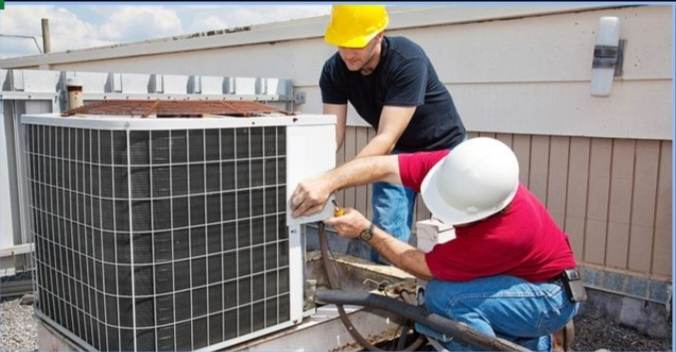What is the AEC-Q200 Standard? Why Does it Matter?

When it comes to the automotive industry, precision and reliability are non-negotiable. Every component that goes into building a vehicle must meet strict standards to ensure optimal performance and safety on the road. One such standard that holds immense importance is the AEC-Q200. You might be wondering What exactly is this mysterious code? Why does it matter in the world of automobiles? Buckle up as we take you on a thrilling ride through the ins and outs of the automotive aec-q200 standard, exploring its purpose, history, key requirements, benefits, and why it’s an absolute necessity for automotive manufacturers. Get ready to rev your engines because things are about to get interesting!
Table of Contents
History and Development of the Standard
The AEC-Q200 standard, established in the late 1980s by the Automotive Electronics Council (AEC), addresses the automotive industry’s need for reliable electronic components subjected to challenging road conditions. Developed by major manufacturers like General Motors, Ford, and Chrysler, this standard sets stringent testing requirements. Originating from the recognition of the need for durable components in vehicles facing extreme temperatures, vibrations, and moisture, the first version was published in 1994.
As technology advanced and challenges evolved, multiple revisions were made to the AEC-Q200 standard, reflecting real-world experiences and technological advancements. This continuous development process ensures access to high-quality components for automotive manufacturers, allowing them to enhance safety, improve vehicle performance and durability, and reduce potential warranty claims. The automotive aec-q200 standard serves as an important benchmark for component reliability testing, enabling the delivery of vehicles with robust electronics systems capable of withstanding diverse operating conditions.
Benefits of Using AEC-Q200 Standard Components
Using AEC-Q200 standard components in the automotive industry brings a multitude of benefits.
Enhanced Reliability
Rigorous testing and screening processes ensure that AEC-Q200 standard components can withstand harsh operating conditions, contributing to their optimal performance and durability.
Improved Safety
Meeting stringent quality requirements reduces the risk of component failures or malfunctions, enhancing overall vehicle safety. Manufacturers gain confidence in the reliability of the parts they integrate into their vehicles.
Streamlined Production Processes
AEC-Q200 compliant components, having undergone extensive testing and validation, can be confidently incorporated into designs without the need for additional qualification procedures. This efficiency saves time, reduces costs, and accelerates time to market for new automotive products.
Compatibility and Interchangeability
Standardized AEC-Q200 components promote compatibility and interchangeability across various automotive systems. This allows manufacturers to replace faulty parts with certified alternatives from different suppliers without compromising functionality or performance.
Regulatory Compliance
Utilizing AEC-Q200 compliant components helps automotive manufacturers maintain compliance with industry regulations and standards. This is important in meeting the increasing global demand for safer and more efficient vehicles, contributing to the competitive edge of companies in the market.
How to Identify AEC-Q200 Compliant Parts
Check for Certification Markings
Look for AEC-Q200 certification or compliance markings directly on the electronic components. Manufacturers often include specific logos or labels to indicate that their products meet the AEC-Q200 standard. These markings serve as a quick visual confirmation of compliance.
Consult Reputable Suppliers
Seek out suppliers with a focus on providing automotive-grade electronics. Reputable suppliers in this domain are likely to have a deep understanding of industry standards and regulations, making them valuable partners for selecting AEC-Q200 compliant parts.
Review Product Datasheets and Documentation
Thoroughly examine product datasheets and documentation provided by manufacturers. These documents typically contain detailed information about a component’s compliance with industry standards, including AEC-Q200. Look for specific details related to temperature range, humidity resistance, mechanical shock resistance, and other characteristics outlined in the standard.
Work with Independent Testing Laboratories
Consider collaborating with independent testing laboratories that specialize in verifying compliance with automotive standards like AEC-Q200. These labs can conduct rigorous tests on components to ensure they meet all necessary criteria. This provides an additional layer of verification beyond the information provided by manufacturers.
By following these steps, automotive designers and manufacturers can take a thorough and multi-faceted approach to ensure that the electronic components they integrate into their systems align with the strict guidelines set forth by the automotive aec-q200 standard. This diligence in component selection contributes to the overall quality, reliability, and performance of automotive systems while minimizing the risks associated with potential component failure or malfunctioning.
Importance of AEC-Q200 in the Automotive Industry
The automotive industry cannot overstate the importance of the AEC-Q200 standard. This standard ensures that electronic components used in vehicles meet stringent quality and reliability requirements.
In an industry where safety is important, using components compliant with the automotive aec-q200 standard becomes important. Rigorous testing subjects these components to extreme conditions such as temperature variations, humidity, vibration, and shock.
By adhering to the automotive aec-q200 standard, automotive manufacturers can confidently affirm the performance and durability of the electronic components used in their vehicles. This proactive approach helps prevent costly recalls due to component failures and maintains customer trust.
Additionally, utilizing automotive aec-q200 parts actively enhances overall product quality by reducing the risk of component failure during vehicle operation. This results in improved reliability and longevity for automotive systems.
Furthermore, the employment of automotive aec-q200 parts actively fosters innovation within the industry. It actively encourages suppliers to develop high-quality components specifically designed for demanding automotive applications. This commitment to continuous improvement benefits not only manufacturers but also consumers who expect reliable and technologically advanced vehicles
Incorporating AEC-Q200 compliant parts actively into automotive manufacturing processes is essential for ensuring safety, minimizing risks of failure, improving product quality, fostering innovation, and ultimately meeting customer expectations in a highly competitive industry.
Conclusion Why the AEC-Q200 Standard is Essential for Automotive Manufacturers
In conclusion, the AEC-Q200 standard serves as a cornerstone in ensuring the reliability and performance of electronic components in automotive applications. Its stringent requirements and rigorous testing procedures empower manufacturers to choose components capable of withstanding the challenging automotive environment.
Adhering to this standard not only instills confidence in product quality and durability but also results in reduced failure rates, minimized warranty claims, and increased customer satisfaction for automotive manufacturers.
Furthermore, automotive aec-q200 compliance contributes significantly to overall road safety, given the important role of electronics in important automotive functions. By meeting these standards, manufacturers mitigate the risk of system failures that could compromise the safety of drivers and passengers.
Beyond tangible benefits, adherence to AEC-Q200 showcases a commitment to excellence within the automotive industry, highlighting a dedication to producing high-quality products that meet or exceed industry standards. In a rapidly advancing technological landscape, staying abreast of evolving standards like AEC-Q200 is imperative. Embracing these standards not only ensures compliance but also positions companies as leaders in innovation and reliability within the automotive sector.
Ultimately, implementing AEC-Q200 principles enables manufacturers to achieve higher levels of quality control, meeting and exceeding customer expectations for durable vehicles capable of optimal performance under extreme conditions.






